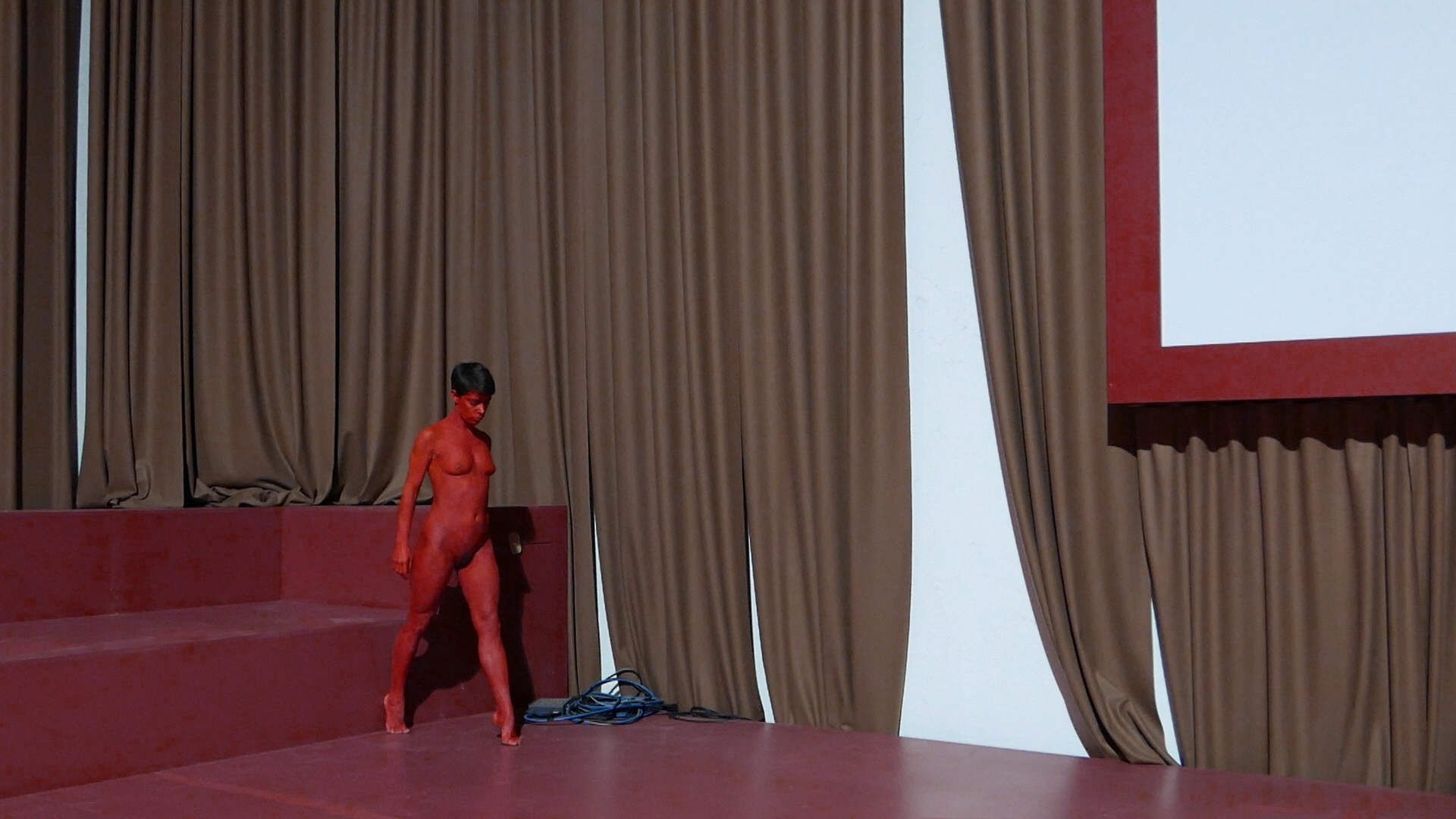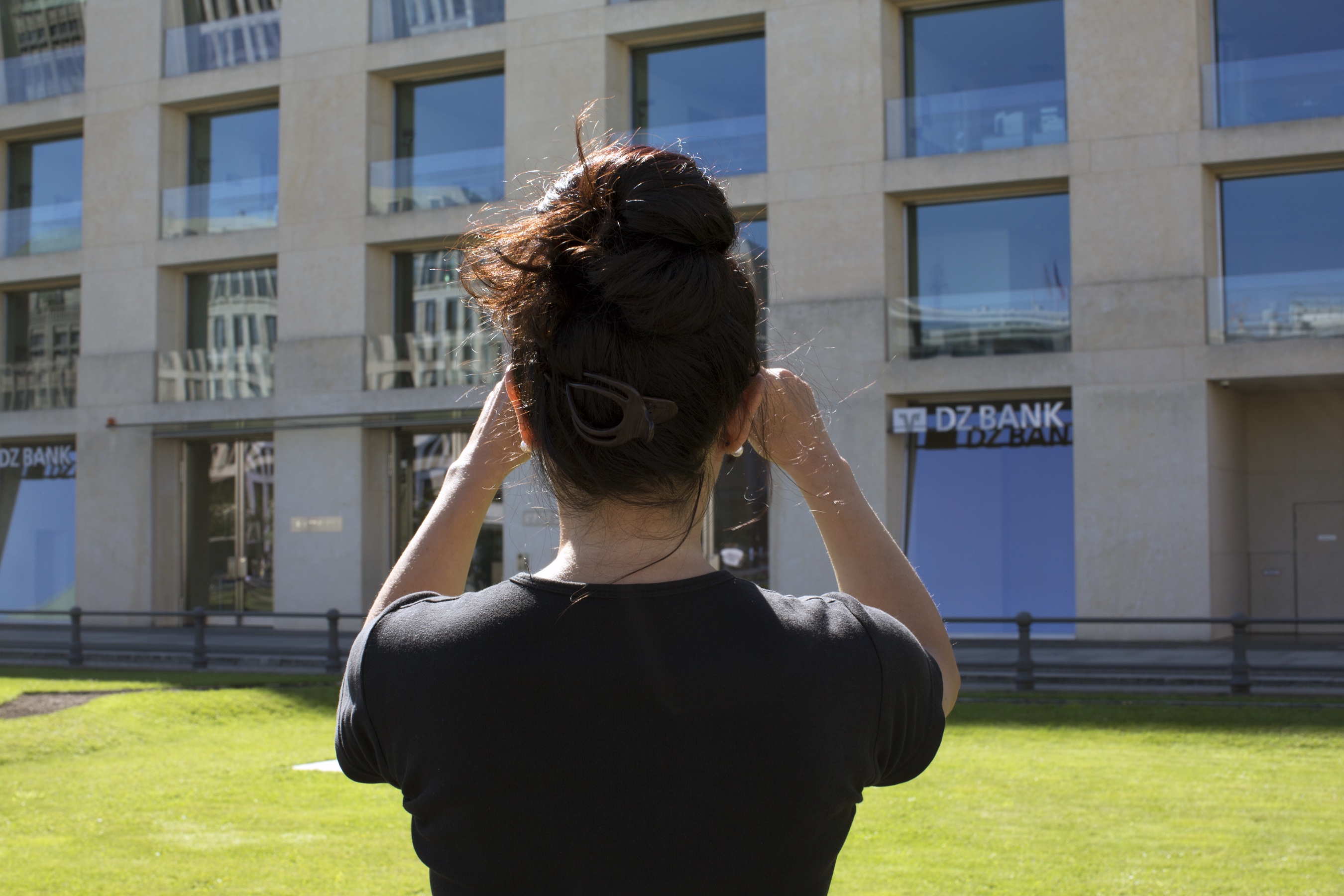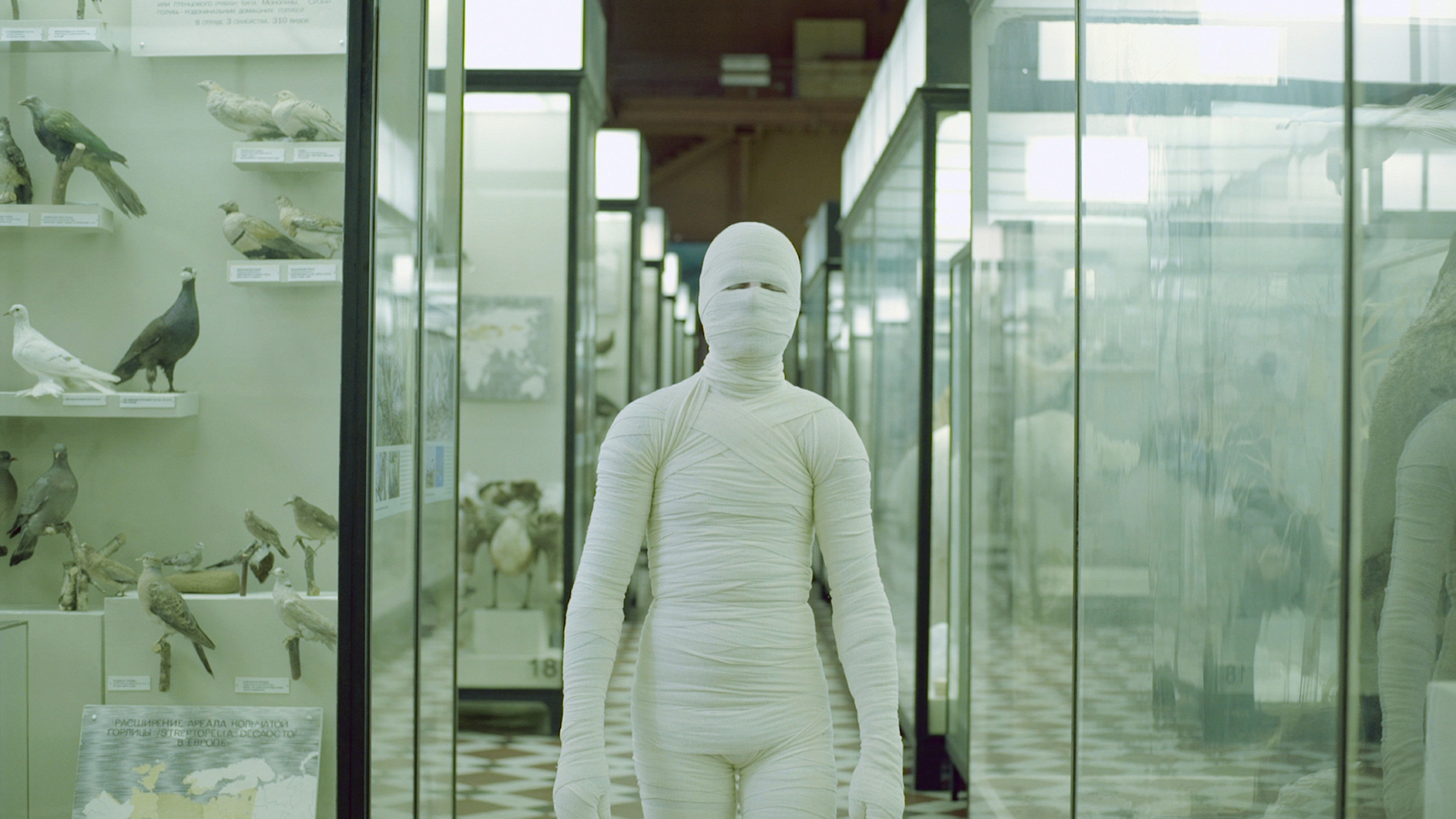Pauline Boudry / Renate Lorenz
Hans Haacke
Yayoi Kusama
Minouk Lim
Yoshua Okón
Jacolby Satterwhite
Hito Steyerl
Ming Wong
Pauline Boudry / Renate Lorenz
ポーリン・ボードリ/
レナーテ・ロレンツ
Hans Haacke
ハンス・ハーケ
Yayoi Kusama
草間彌生
Minouk Lim
ミヌク・イム
Yoshua Okón
ジョシュア・オコン
Jacolby Satterwhite
ジェイコルビ・サッターホワイト
Hito Steyerl
ヒト・シュタイエル
Ming Wong
ミン・ウォン
"The Art of Not Being Governed (Quite So Much)" is a public address and film screening event with supporting visual references by Pauline Boudry / Renate Lorenz, Hans Haacke, Yayoi Kusama, Minouk Lim, Yoshua Okón, Jacolby Satterwhite, Hito Steyerl, and Ming Wong. The presentation is curated by Asakusa as an adaptation of the lecture “What is Critique?” (1978) by Michel Foucault.
The critical attitude challenges rationality, and formulates ethical virtues that articulate normative guidelines. Relearning from Michel Foucault and his proposition “how not to be governed,” this ambient event and the overarching programme evokes the voice of this visionary thinker, and through citing works by listed artists, brings together an analysis of debates on institutional critique, outsider art, decolonizing practices and queer histories. Following Foucault’s evolving enterprise of thoughts and “the critical attitude as virtue in general,” the event considers the intertextuality of knowledge and power, and how art functions within this parameter. Drawing parallel narratives to the histories of local media, entertainment culture, political stagnation and government conservatism, the programme seeks to identify and foster artistic strategies of critique for cultural production today.
Specially featured in the event programme are two new projects produced through an invitation by Asakusa art space. The first work accesses the environmental crisis which has strategically functioned in the expansion of global governance. Yoshua Okón’s (b. 1970, Mexico City) nature documentary glides along the face of an artificial island, suggesting how ever-growing scale of wastage fuels the current frameworks of neoliberal economies. Minouk Lim (b. 1968, Daejeon) traces the adaptation of the German folk song O Tannenbaum to the communist Red Flag Song, and how it became a vessel for otherwise conflicting ideologies. A rally performance will be assembled around Tokyo’s Imperial Palace, intended to unite the “ghosts” of discordant communities and temporalities.
Lim as well as Ming Wong (b. 1971, Singapore) will contribute with presentations the day of the event. Wong, known for appropriation of popular culture and cinematic decoding of heteronormative scripts, will visit Asakusa for production research on The Nikkatsu Roman Porno (1971–1988)—an infamous series of Japanese soft porn films.
Other contributions of existing works by the artists further articulate a matrix of concerns which become agents for and against governance. Pointing toward the influence of corporate interests in cultural industries and calling specific institutions into questions, Hans Haacke (b. 1936, Cologne) and Hito Steyerl (b. 1966, Munich) provide a tactful framework to lead the discussion: what is critique in art? Queer archaeology, as termed by Pauline Boudry / Renate Lorenz (working together in Berlin since 2007), delves into the composite of fluid, contextual, and intersectional identities. Alternatively, Yayoi Kusama’s (b. 1929, Matsumoto) multidisciplinary works draw inspiration from lifelong neurosis, hallucinations, and her singular identity—a paradox of confinement and liberation by the management of her own clinical “insanity.”
"The Art of Not Being Governed (Quite So Much)"
Asakusa Entertainments
22 - 24 September, 2018
Supported by: Arts Council Tokyo, Tokyo Metropolitan Foundation for History and Culture; The Asahi Shimbun Foundation, FONCA.
Special thanks: Jaime Marie Davis, Daisuke Miyatsu, Ota Fine Arts, SPoN!
Image: Jacolby Satterwhite, Avenue B (Danshoku), 2018.

[ Read More... ]
"The Art of Not Being Governed (Quite So Much)" is a public address and film screening event with supporting visual references by Pauline Boudry / Renate Lorenz, Hans Haacke, Yayoi Kusama, Minouk Lim, Yoshua Okón, Jacolby Satterwhite, Hito Steyerl, and Ming Wong. The presentation is curated by Asakusa as an adaptation of the lecture “What is Critique?” (1978) by Michel Foucault.
The critical attitude challenges rationality, and formulates ethical virtues that articulate normative guidelines. Relearning from Michel Foucault and his proposition “how not to be governed,” this ambient event and the overarching programme evokes the voice of this visionary thinker, and through citing works by listed artists, brings together an analysis of debates on institutional critique, outsider art, decolonizing practices and queer histories. Following Foucault’s evolving enterprise of thoughts and “the critical attitude as virtue in general,” the event considers the intertextuality of knowledge and power, and how art functions within this parameter. Drawing parallel narratives to the histories of local media, entertainment culture, political stagnation and government conservatism, the programme seeks to identify and foster artistic strategies of critique for cultural production today.
Specially featured in the event programme are two new projects produced through an invitation by Asakusa art space. The first work accesses the environmental crisis which has strategically functioned in the expansion of global governance. Yoshua Okón’s (b. 1970, Mexico City) nature documentary glides along the face of an artificial island, suggesting how ever-growing scale of wastage fuels the current frameworks of neoliberal economies. Minouk Lim (b. 1968, Daejeon) traces the adaptation of the German folk song O Tannenbaum to the communist Red Flag Song, and how it became a vessel for otherwise conflicting ideologies. A rally performance will be assembled around Tokyo’s Imperial Palace, intended to unite the “ghosts” of discordant communities and temporalities.
Lim as well as Ming Wong (b. 1971, Singapore) will contribute with presentations the day of the event. Wong, known for appropriation of popular culture and cinematic decoding of heteronormative scripts, will visit Asakusa for production research on The Nikkatsu Roman Porno (1971–1988)—an infamous series of Japanese soft porn films.
Other contributions of existing works by the artists further articulate a matrix of concerns which become agents for and against governance. Pointing toward the influence of corporate interests in cultural industries and calling specific institutions into questions, Hans Haacke (b. 1936, Cologne) and Hito Steyerl (b. 1966, Munich) provide a tactful framework to lead the discussion: what is critique in art? Queer archaeology, as termed by Pauline Boudry / Renate Lorenz (working together in Berlin since 2007), delves into the composite of fluid, contextual, and intersectional identities. Alternatively, Yayoi Kusama’s (b. 1929, Matsumoto) multidisciplinary works draw inspiration from lifelong neurosis, hallucinations, and her singular identity—a paradox of confinement and liberation by the management of her own clinical “insanity.”
"The Art of Not Being Governed (Quite So Much)"
Asakusa Entertainments
22 - 24 September, 2018
Supported by: Arts Council Tokyo, Tokyo Metropolitan Foundation for History and Culture; The Asahi Shimbun Foundation, FONCA.
Special thanks: Jaime Marie Davis, Daisuke Miyatsu, Ota Fine Arts, SPoN!
Image: Jacolby Satterwhite, Avenue B (Danshoku), 2018.

[ Read More... ]
"The Art of Not Being Governed (Quite So Much)" is a public address and film screening event with supporting visual references by Pauline Boudry / Renate Lorenz, Hans Haacke, Yayoi Kusama, Minouk Lim, Yoshua Okón, Jacolby Satterwhite, Hito Steyerl, and Ming Wong. The presentation is curated by Asakusa as an adaptation of the lecture “What is Critique?” (1978) by Michel Foucault.
The critical attitude challenges rationality, and formulates ethical virtues that articulate normative guidelines. Relearning from Michel Foucault and his proposition “how not to be governed,” this ambient event and the overarching programme evokes the voice of this visionary thinker, and through citing works by listed artists, brings together an analysis of debates on institutional critique, outsider art, decolonizing practices and queer histories. Following Foucault’s evolving enterprise of thoughts and “the critical attitude as virtue in general,” the event considers the intertextuality of knowledge and power, and how art functions within this parameter. Drawing parallel narratives to the histories of local media, entertainment culture, political stagnation and government conservatism, the programme seeks to identify and foster artistic strategies of critique for cultural production today.
Lim as well as Ming Wong (b. 1971, Singapore) will contribute with presentations the day of the event. Wong, known for appropriation of popular culture and cinematic decoding of heteronormative scripts, will visit Asakusa for production research on The Nikkatsu Roman Porno (1971–1988)—an infamous series of Japanese soft porn films.
Lim as well as Ming Wong (b. 1971, Singapore) will contribute with presentations the day of the event. Wong, known for appropriation of popular culture and cinematic decoding of heteronormative scripts, will visit Asakusa for production research on The Nikkatsu Roman Porno (1971–1988)—an infamous series of Japanese soft porn films.
Other contributions of existing works by the artists further articulate a matrix of concerns which become agents for and against governance. Pointing toward the influence of corporate interests in cultural industries and calling specific institutions into questions, Hans Haacke (b. 1936, Cologne) and Hito Steyerl (b. 1966, Munich) provide a tactful framework to lead the discussion: what is critique in art? Queer archaeology, as termed by Pauline Boudry / Renate Lorenz (working together in Berlin since 2007), delves into the composite of fluid, contextual, and intersectional identities. Alternatively, Yayoi Kusama’s (b. 1929, Matsumoto) multidisciplinary works draw inspiration from lifelong neurosis, hallucinations, and her singular identity—a paradox of confinement and liberation by the management of her own clinical “insanity.”
"The Art of Not Being Governed (Quite So Much)"
Asakusa Entertainments
22 - 24 September, 2018
Supported by: Arts Council Tokyo, Tokyo Metropolitan Foundation for History and Culture; The Asahi Shimbun Foundation, FONCA.
Special thanks: Jaime Marie Davis, Daisuke Miyatsu, Ota Fine Arts, SPoN!
Image: Jacolby Satterwhite, Avenue B (Danshoku), 2018.

"The Art of Not Being Governed (Quite So Much)" is a public address and film screening event with supporting visual references by Pauline Boudry / Renate Lorenz, Hans Haacke, Yayoi Kusama, Minouk Lim, Yoshua Okón, Jacolby Satterwhite, Hito Steyerl, and Ming Wong. The presentation is curated by Asakusa as an adaptation of the lecture “What is Critique?” (1978) by Michel Foucault.
The critical attitude challenges rationality, and formulates ethical virtues that articulate normative guidelines. Relearning from Michel Foucault and his proposition “how not to be governed,” this ambient event and the overarching programme evokes the voice of this visionary thinker, and through citing works by listed artists, brings together an analysis of debates on institutional critique, outsider art, decolonizing practices and queer histories. Following Foucault’s evolving enterprise of thoughts and “the critical attitude as virtue in general,” the event considers the intertextuality of knowledge and power, and how art functions within this parameter. Drawing parallel narratives to the histories of local media, entertainment culture, political stagnation and government conservatism, the programme seeks to identify and foster artistic strategies of critique for cultural production today.
Lim as well as Ming Wong (b. 1971, Singapore) will contribute with presentations the day of the event. Wong, known for appropriation of popular culture and cinematic decoding of heteronormative scripts, will visit Asakusa for production research on The Nikkatsu Roman Porno (1971–1988)—an infamous series of Japanese soft porn films.
Lim as well as Ming Wong (b. 1971, Singapore) will contribute with presentations the day of the event. Wong, known for appropriation of popular culture and cinematic decoding of heteronormative scripts, will visit Asakusa for production research on The Nikkatsu Roman Porno (1971–1988)—an infamous series of Japanese soft porn films.
Other contributions of existing works by the artists further articulate a matrix of concerns which become agents for and against governance. Pointing toward the influence of corporate interests in cultural industries and calling specific institutions into questions, Hans Haacke (b. 1936, Cologne) and Hito Steyerl (b. 1966, Munich) provide a tactful framework to lead the discussion: what is critique in art? Queer archaeology, as termed by Pauline Boudry / Renate Lorenz (working together in Berlin since 2007), delves into the composite of fluid, contextual, and intersectional identities. Alternatively, Yayoi Kusama’s (b. 1929, Matsumoto) multidisciplinary works draw inspiration from lifelong neurosis, hallucinations, and her singular identity—a paradox of confinement and liberation by the management of her own clinical “insanity.”
"The Art of Not Being Governed (Quite So Much)"
Asakusa Entertainments
22 - 24 September, 2018
Supported by: Arts Council Tokyo, Tokyo Metropolitan Foundation for History and Culture; The Asahi Shimbun Foundation, FONCA.
Special thanks: Jaime Marie Davis, Daisuke Miyatsu, Ota Fine Arts, SPoN!
Image: Jacolby Satterwhite, Avenue B (Danshoku), 2018.








